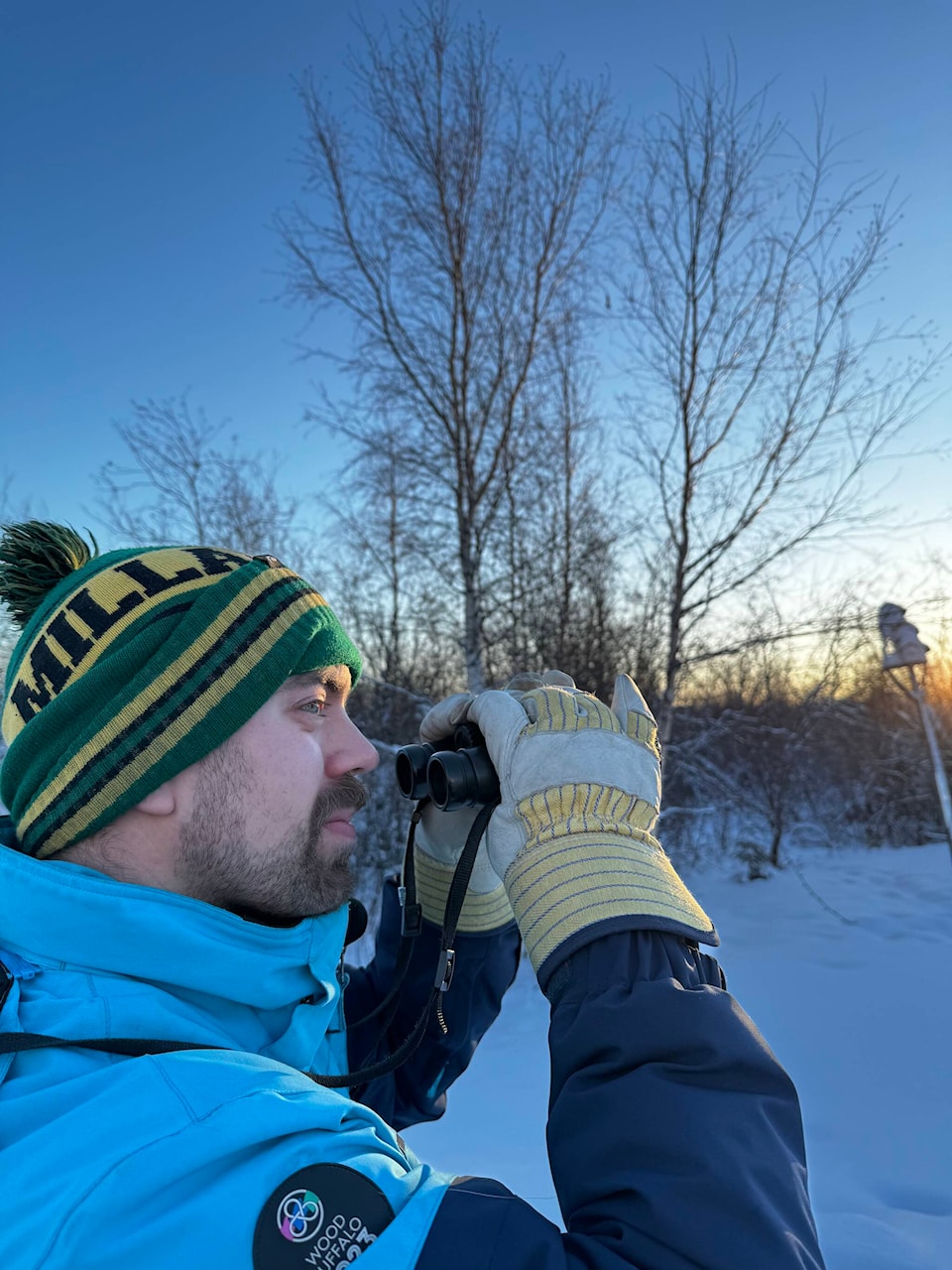The European starling was the unexpected bird of the day during Yellowknife’s annual Ecology North Christmas bird count, according to local birding enthusiast Reid Hildebrandt.
“These are birds that should be migrating out of here, but the last five years or so they have basically refused to migrate,” Hildebrandt, the event organizer said, adding that it was likely the birds try to survive the winter by picking through food scraps at the city dump.
“The starling is an introduced species. One hundred or 200 years ago, there weren’t any starlings in North America — they are a European bird. They were introduced to New York City because somebody thought they should have all the birds mentioned by Shakespeare in New York City, and then they just started breeding across North America,” he said of the glossy dark bird that can also be seen at local bird-feeders.
Hildebrandt knows his birds and the wide variety of species that live and migrate to and from the Northwest Territories, having developed the interest of birdwatching as a child.
He said the purpose of the bird count last weekend was to collect the data needed to see trends in population over time.
A century of birdwatching
While the annual Christmas bird count has been ongoing in Yellowknife for the past 39 years, it is an event that has spanned North America since 1900, making it one of the largest and most valuable citizen-science projects available to scientists and naturalists who then use the data to determine species distribution and changes in population as the result of environmental factors, for example.
A total of 15 species were observed this year in 13 areas by a group of over 20 birding enthusiasts during the day-long event in the Yellowknife region.
Hildebrandt said one overall trend he has seen is that in most groups of birds, with a few exceptions, there is a small to moderate decline in numbers.
“Waterfowl populations in North America are generally doing well. But a lot of the insect-feeding birds, many of them are definitely declining.
“But overall, most bird species other than waterfowl are declining in North America,” Hildebrandt said.
And while there may be no apparent shortage of insects in the NWT — especially mosquitoes — Hildebrandt said the falling number of insect-feeding birds is driven by loss of habitat, in particular in the tropical regions and other areas where birds migrate.
Magpies elbow for space
Another intrepid birding enthusiast who joined in the annual count was Bob Bromley of Yellowknife, who said in his area blackcap chickadees, black grosbeaks, ptarmigan, ravens and magpies were all observed.
“We didn’t see any gray jays or Canada jays, which is new for the last decade, roughly since the magpies have really flourished. So, I’m pretty sure that they are displacing the gray jays in town and the Canada Jays,” Bromley said.
Grouse and ptarmigan are in a high cycle as well, Bromley noted, with many being observed in the region, which means that birds that prey on them such as Northern goshawks, gyrfalcons or great horned owls are not migrating as they usually would.
Gene Hugo, another avid birder, also participated in the adventure and said for him, bird watching is a way of getting outside and enjoying the natural world around him.
“It was a beautiful day. We haven’t had much sun (lately) so it was good to be outside. It just slows you down and makes you more aware of just what’s out there along the trail,” he said.
Hildebrandt said as a hobby, birdwatching is something that anyone can enjoy. In the NWT, apart from a few species such as ravens, each diverse region has its own specific birds that come to roost during migration, creating variety for enthusiasts if travelling in the territory, he noted.
And if you’re wondering what the most common bird sighting was during the event, Hildebrandt had the answer.
“The most common bird would have been the common raven, which we would have had well over 2,000 of them counted — most at the dump.”
—By Jill Westerman


